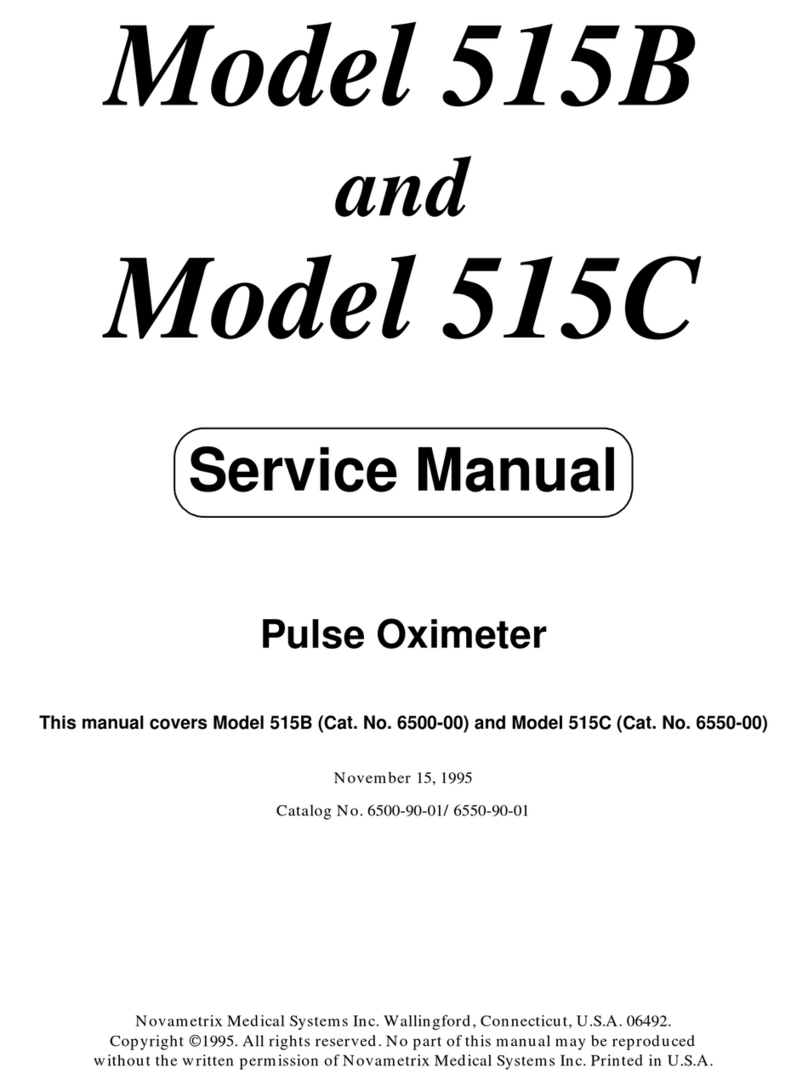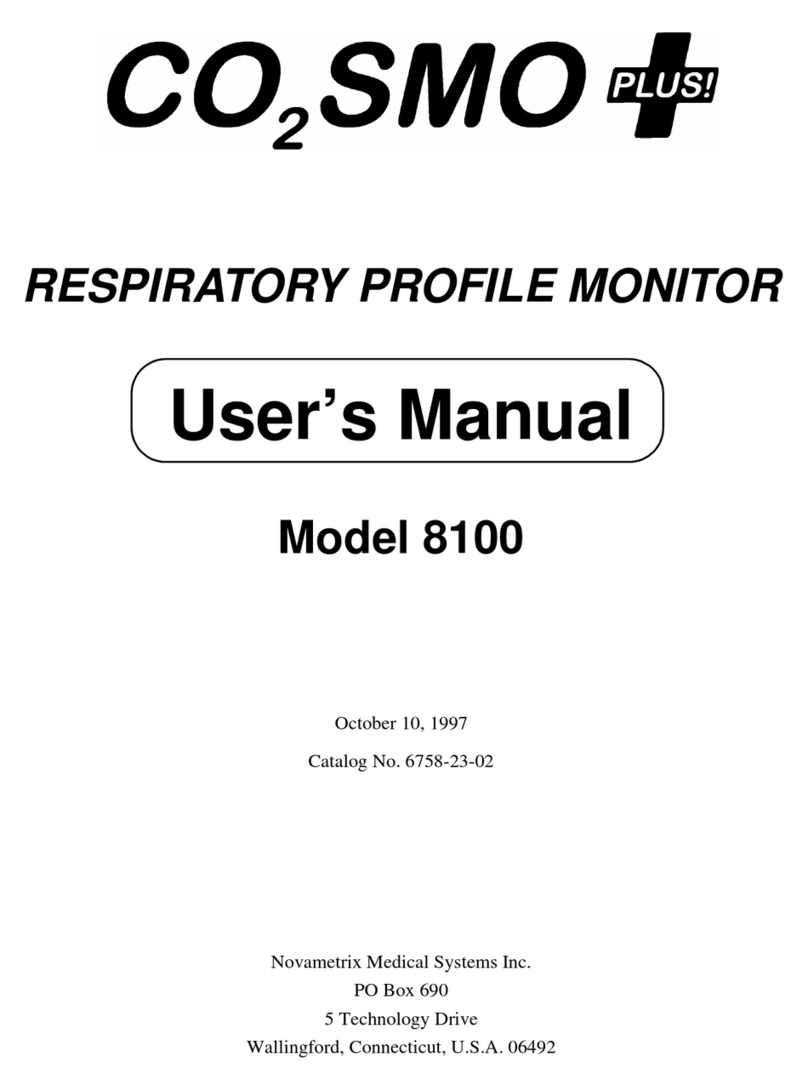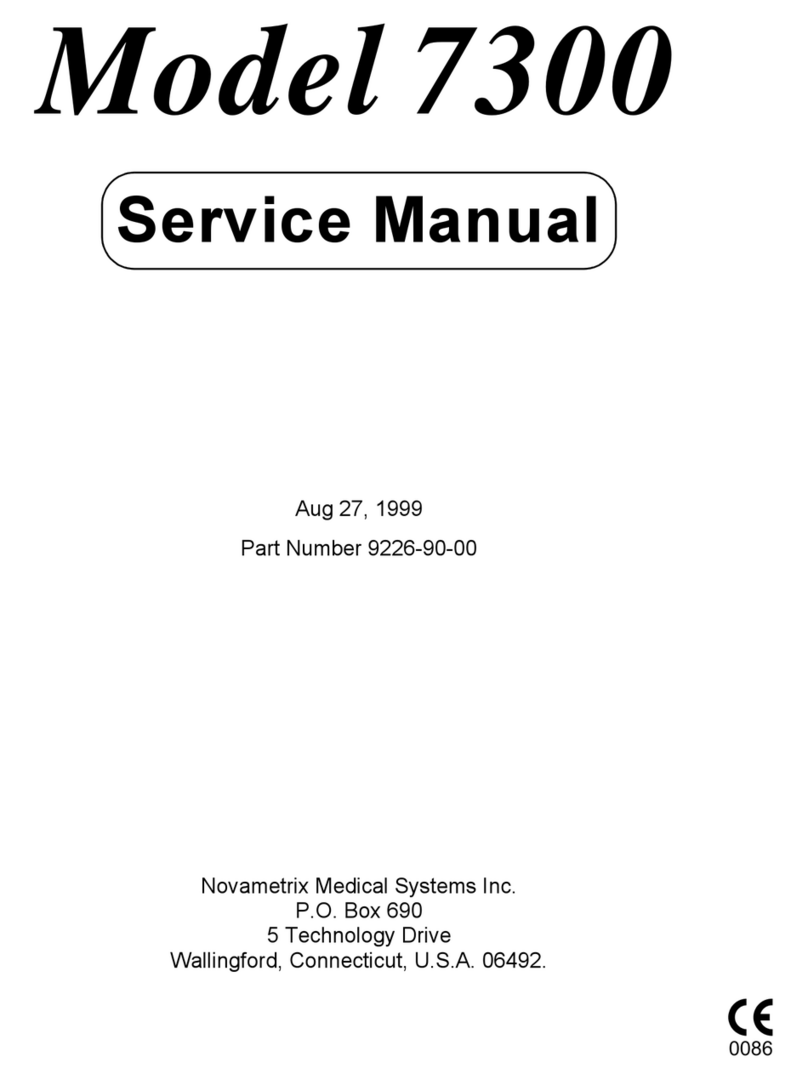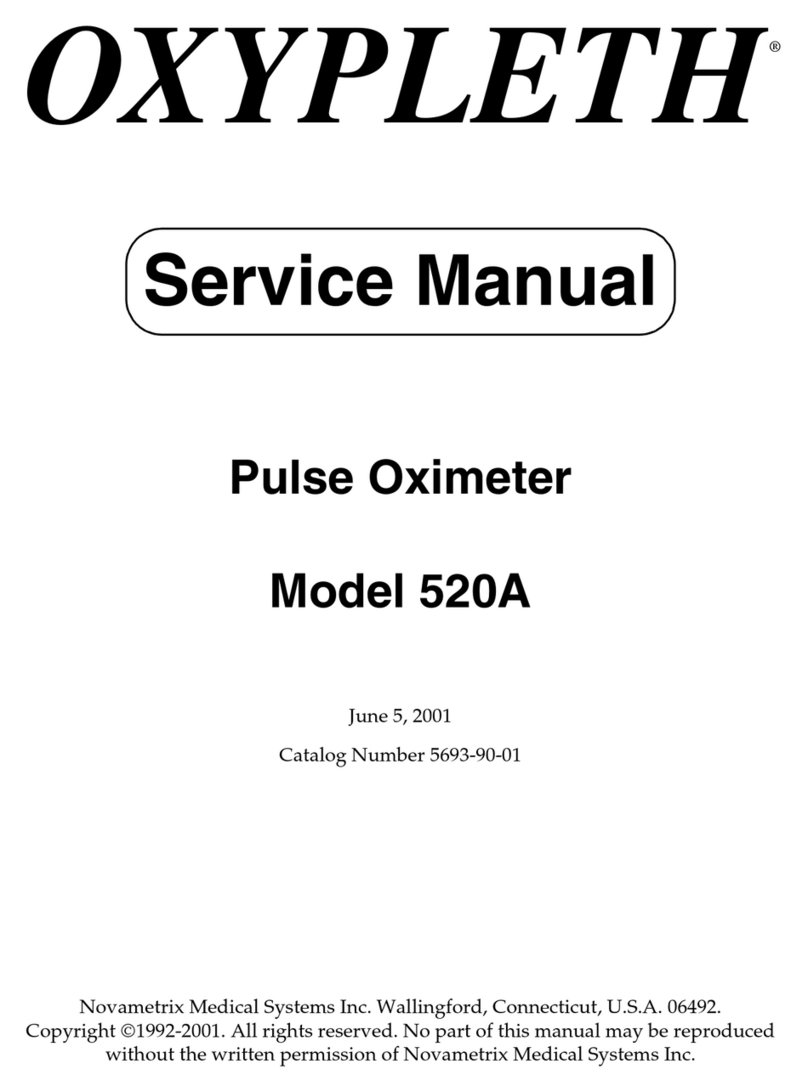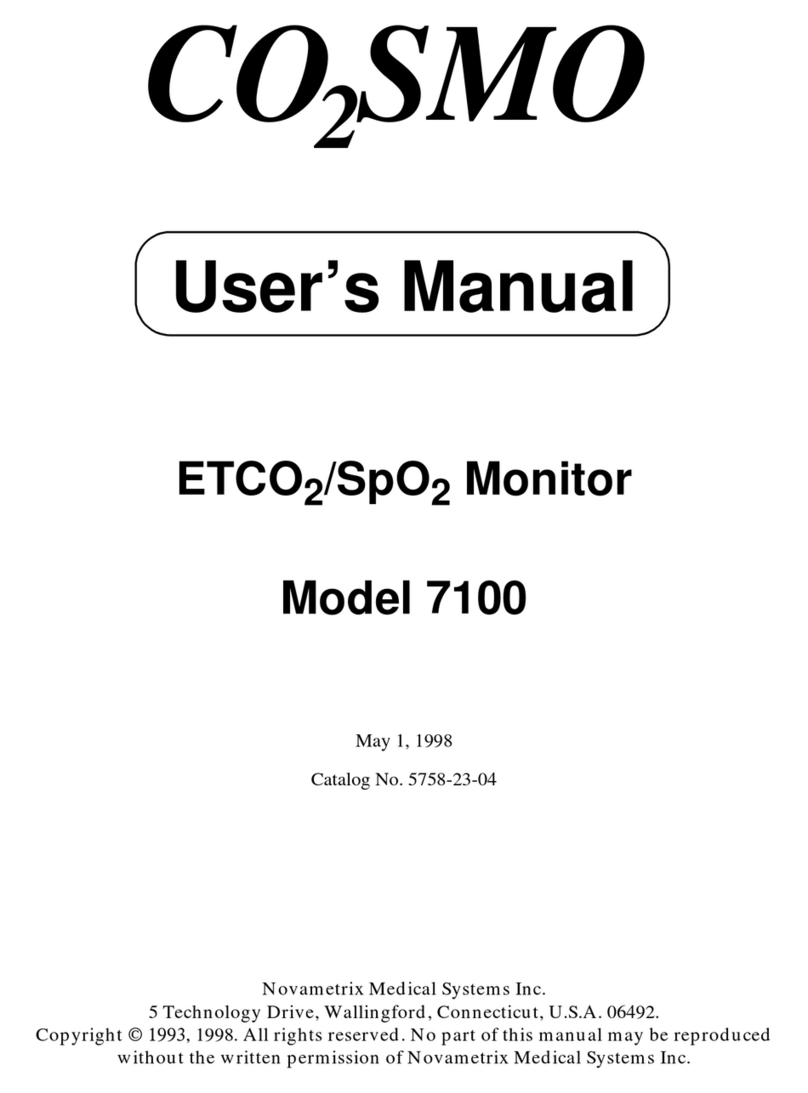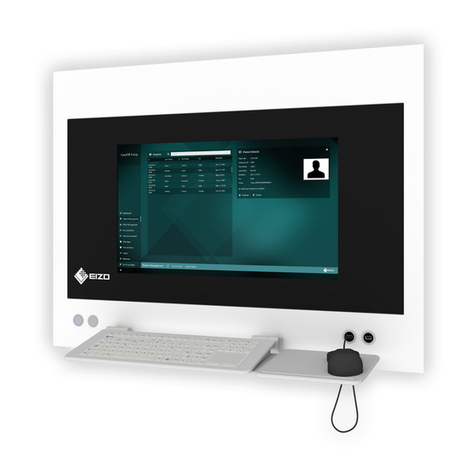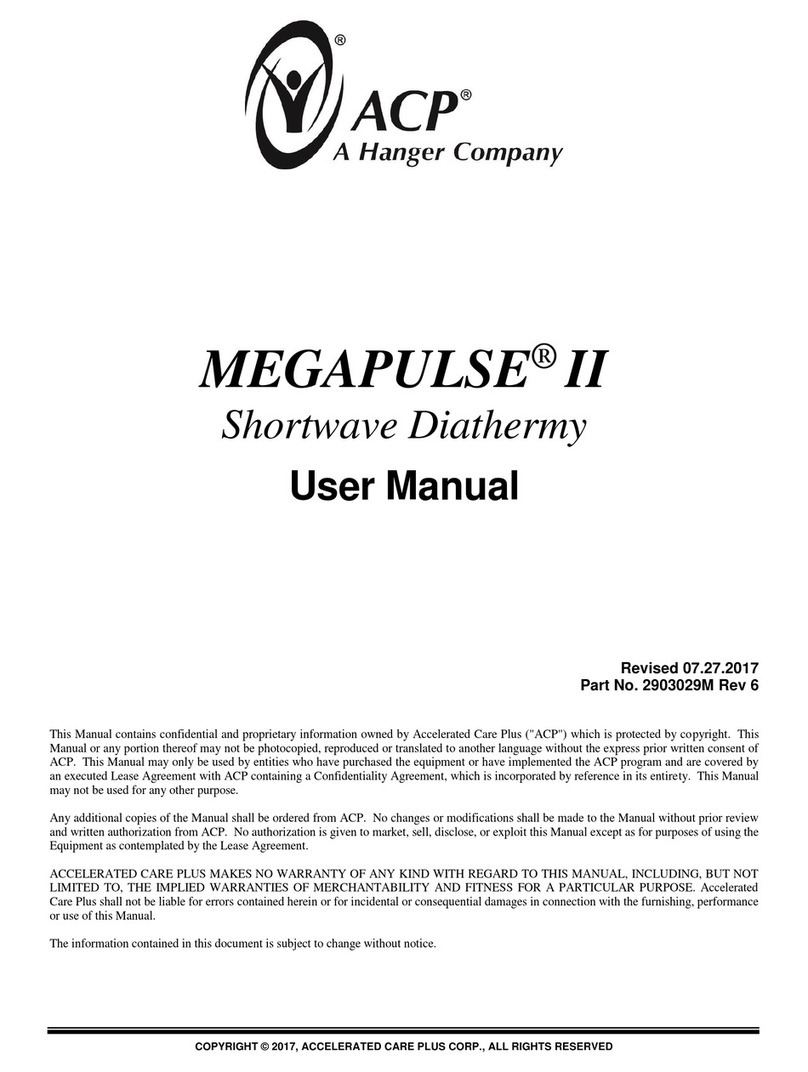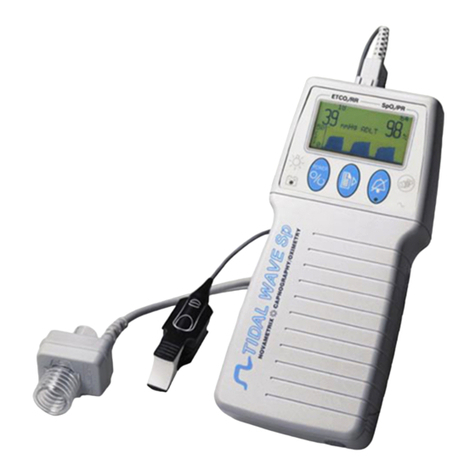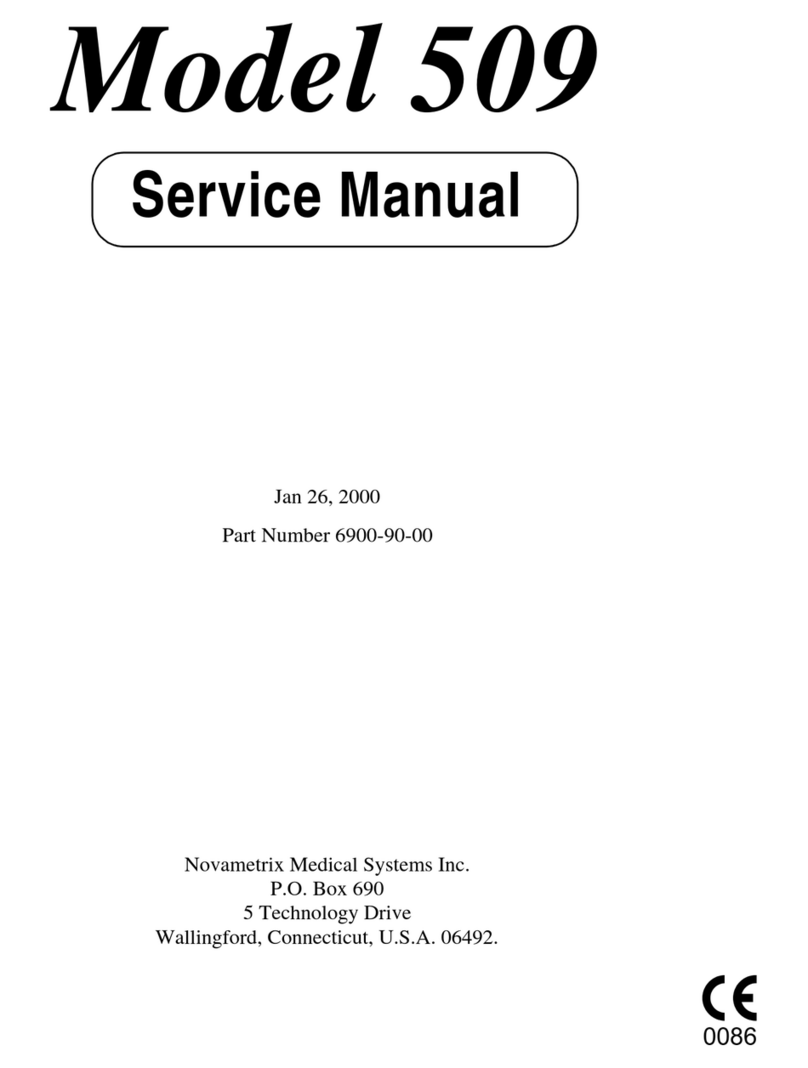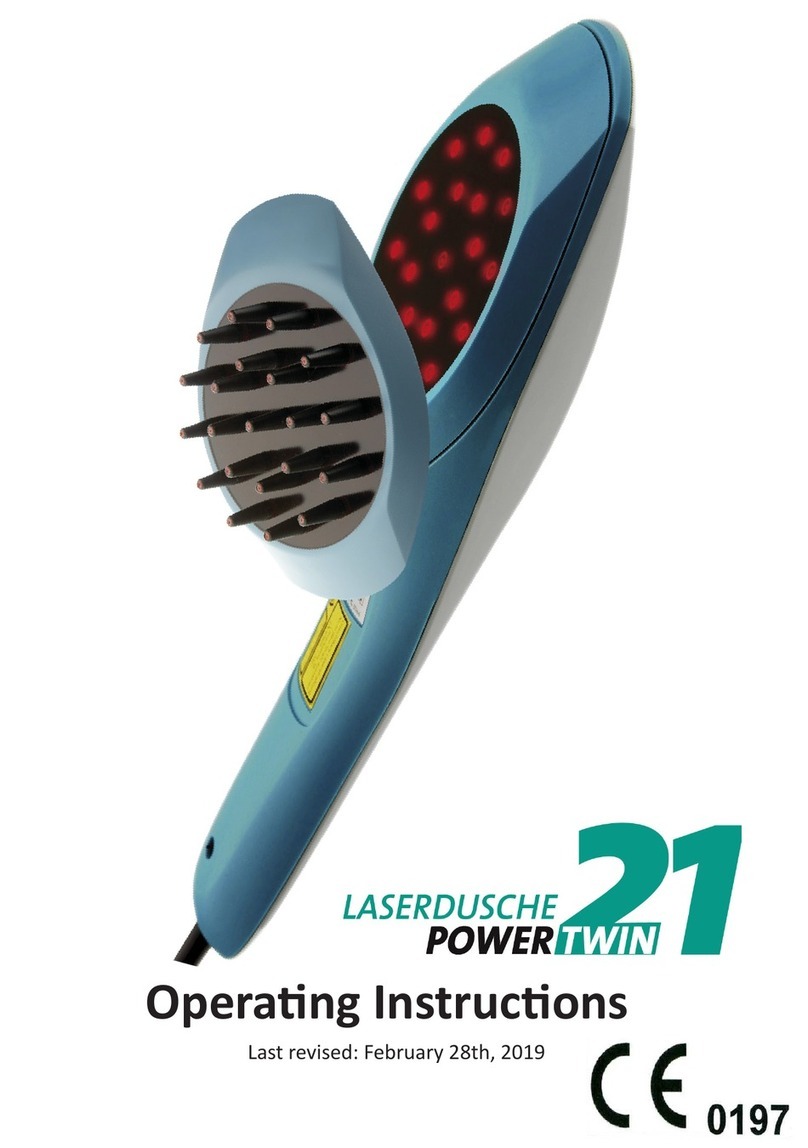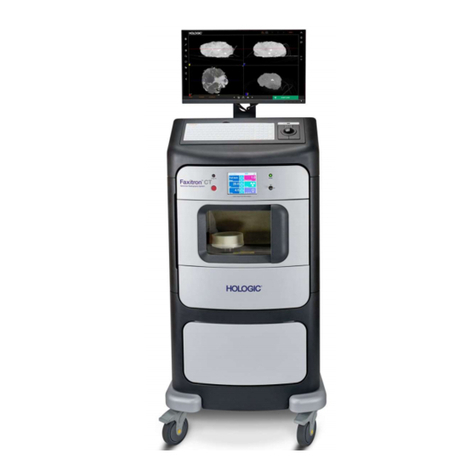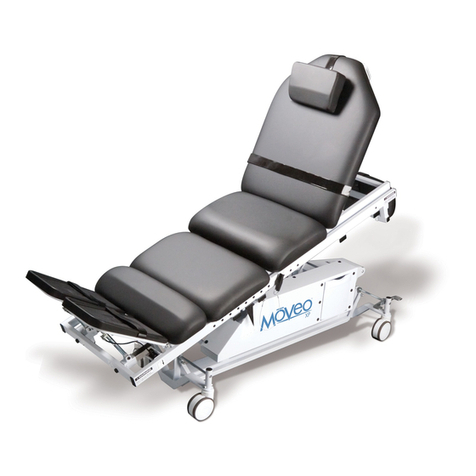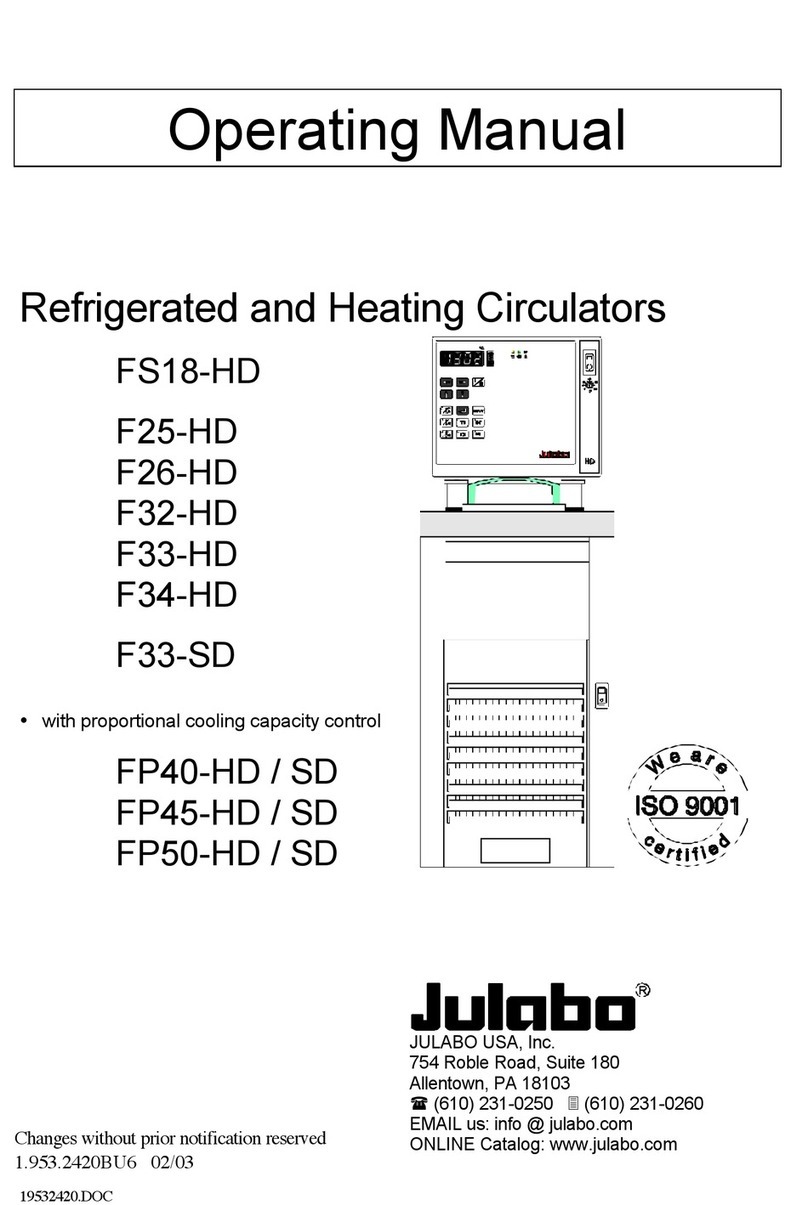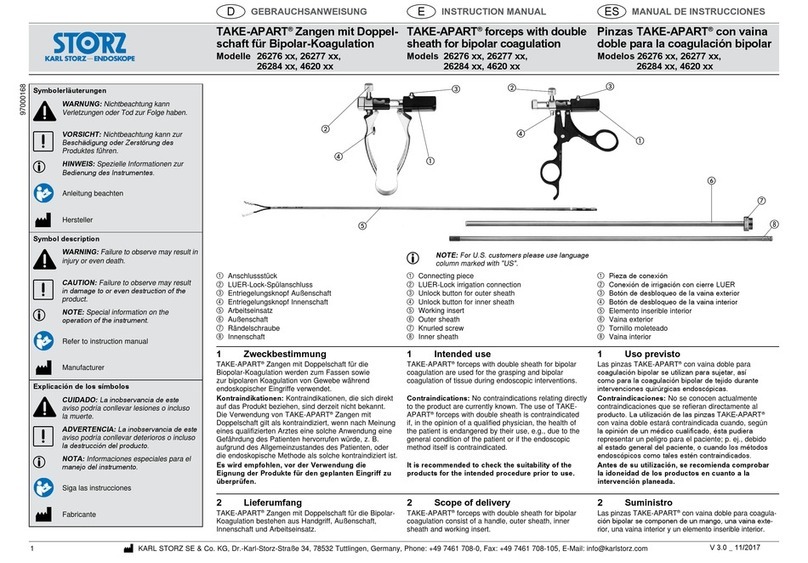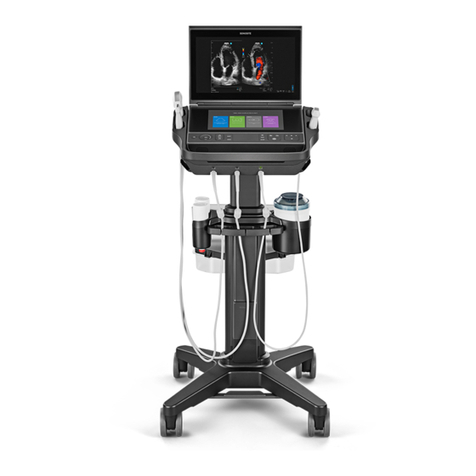
Section 3
Capnostat Case and Detector Heater Control
14
Model 610 Service Manual Rev. 01
3.4 CAPNOSTAT Case and Detector Heater Control
Refer to schematic page 4.
The temperature of the system directly affects its ability to accurately measure CO2and therefore must
be precisely maintained at a controlled value. Two separate heaters and control circuitry are used; one
regulates the temperature of the detectors for the CO2Data and Reference channels; the other regulates
the temperature of the transducer case (and loosely maintains the temperature of the airway adapter).
While thepurpose ofthe Detector heater is to keep the detectors'sensitivity to infrared radiation constant,
the function of the Case heater is to keep condensation from forming on the airway windows by elevating
the window temperature above the ambient airway temperature. Both heaters use an efficient Pulse-
Width Modulation scheme designed to decrease power consumption, with the PWM timing generated by
the TPU under microprocessor control. This control loop is run by the CPU which does the calculations
passes the duty cycle to the TPU. For the purpose of describing the regulation loop, the case heater
circuitry will be considered. The detector and case heater circuitry are identical.
Inside the CAPNOSTAT, a sensing thermistor is thermally connected to the heater module. Initially, the
CAPNOSTAT is at the ambient temperature and the resistance of the thermistor is large. A small current
flows through the signal path CASETHERM and only a small voltage is developed across R131. The
microprocessor programs the TPU to allow a maximum duty cycle of 90% to power the PWM heater
circuitry. This causes the heater control MOSFET Q13A to be pulsed on and off with a duty cycle that is
underdirect control of the program software. As the heaterwarms up the case,the thermistor's resistance
decreases, raising the voltage appearing at the input of the control loop. As described below, the MPU
looksat this output voltage and decreases the duty cycle of the PWM controlcircuitry, gradually reducing
the power output into the heater. When the desired temperature set point is reached, a balance is struck
between the energy delivered into the system and the heat flow out of the system.
The case thermistor is sensed by amplifier IC20A pin 3. The difference between the signal at the non-
inverting input and the reference appearing at the inverting terminal generates an error voltage
proportional to the sensed temperature at the amplifier's output:
eo(V) = [83.133V / (Rth+3.32K)] - 10.2V
where eo= amplifier output voltage
Rth = resistance of the thermistor
= 4.36933K at 45°C
Temp (°C) = 4.1288 (°C/V) * eo (T) V + 41.7321°C
where eo= amplifier output voltage at temperature T
This error voltage is low pass filtered by amplifier IC19A, sent to the ADC and processed by the CPU to
regulate the output pulses from the TPU. The TPU PWM signal is buffered by MOSFET Driver IC22B
and capacitively coupled to the gate of the heater drive MOSFET, Q13A. Capacitive coupling the signal
prevents a system fault that would allow the PWM to be stuck at a level that would cause too high of a
heater output. In the absence of a pulse, the gate drive will be pulled high, disabling the output to the
heater. The pulsed voltage signal out of the MOSFET is filtered by D15, L7, C52 and C54 to produce a
DC output level for the heater. Since the TPU generated PWM signal is based on the system clock, it is
synchronized with the generation of the source pulse timing. This minimizes the effect of any random
disturbance caused by the heater circuit on the detection of the CO2Data and Reference signals.
The error voltage out of amplifier IC20A also appears at the temperature watchdog comparator IC21A.
If the error voltage reaches a voltage equivalent to 56 degrees Celsius, the comparator trips, turning Q11
off. The gate of MOSFET Q10A is pulled high by R130, which turns it off and VHTR is prevented from
reaching the Source of transistor Q13A. The temperature of the sensor is also monitored by the MPU
which will disable the heater when a temperature of 50 degrees Celsius is exceeded. To shut off the heater,
the MPU asserts the CASEOT signal, turning Q12 on which turns Q11 and Q10A off, which in turn shuts
Q13A off.




















